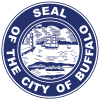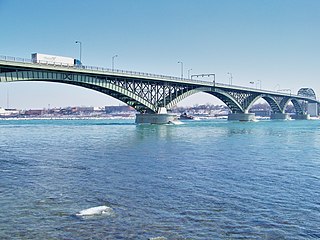
Buffalo is a city in the U.S. state of New York and the seat of Erie County. It lies in Western New York, at the eastern end of Lake Erie, at the head of the Niagara River, on the United States border with Canada. With a population of 278,349 according to the 2020 census, Buffalo is the 2nd-largest city in New York state and the 78th-largest city in the United States. Buffalo and the city of Niagara Falls together make up the two-county Buffalo–Niagara Falls Metropolitan Statistical Area (MSA), which had an estimated population of 1.2 million in 2020, making it the 49th largest MSA in the United States.

Labatt Brewing Company Limited is a Anheuser-Busch InBev-owned brewery headquartered in Toronto, Ontario, Canada. Founded in 1847, Labatt is the largest brewer in Canada.
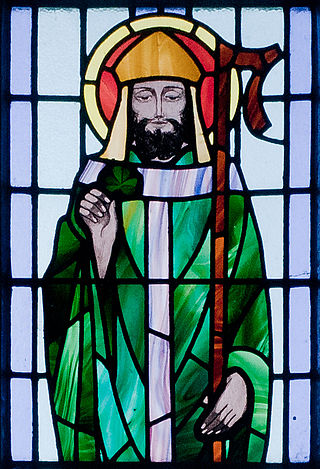
Saint Patrick's Day, or the Feast of Saint Patrick, is a religious and cultural holiday held on 17 March, the traditional death date of Saint Patrick, the foremost patron saint of Ireland.

Easter Monday is the second day of Easter and a public holiday in some countries. In Western Christianity it marks the second day of the Octave of Easter; in Eastern Christianity it marks the second day of Bright Week.

KeyBank Center is a multipurpose indoor arena located in Buffalo, New York. Originally known as Marine Midland Arena, the venue has since been named HSBC Arena and First Niagara Center. Home to the Buffalo Sabres of the National Hockey League since 1996, is the largest indoor arena in Western New York, seating 19,070. It replaced the Sabres' former home, Buffalo Memorial Auditorium, where the team played from 1970 to 1996. The venue is also home to the Buffalo Bandits of the National Lacrosse League.

The Niagara Frontier Transportation Authority (NFTA) is the public agency responsible for operating most public transportation services in the Buffalo–Niagara Falls metropolitan area. The NFTA, as an authority, oversees a number of subsidiaries, including the NFTA Metro bus and rail system, the Buffalo-Niagara International Airport, the Niagara Falls International Airport and NFTA Small Boat Harbor. The NFTA Metro bus and rail system is a multi-modal agency, utilizing various vehicle modes, using the brand names: NFTA Metro Bus, NFTA Metro Rail, NFTA Metrolink and NFTA PAL. In 2022, the system had a ridership of 14,061,700 or about 54,000 per weekday as of the third quarter of 2023. In addition, the NFTA also owns and manages a number of properties, including the Buffalo Metropolitan Transportation Center in Downtown Buffalo ; the Niagara Falls Transportation Center on Factory Outlet Boulevard; the Portage Road Transit Center in Niagara Falls; and a number of strategically located bus loops and transit centers in the Buffalo Niagara region. Of note, many of the bus loops have been in continuous operation since the days of the International Railway Company, a predecessor to the NFTA. Agency-wide, the NFTA employs 1,500 full-time and part-time employees. There are three business centers that operate as the NFTA organization: Surface Transportation, which handles ground transportation throughout Erie and Niagara counties, Aviation, which handles air related business at the Buffalo-Niagara International Airport and Niagara Falls International Airport and Property Risk/Management, which operates the NFTA-Boat Harbor and handles other properties that are owned and/or operated by the NFTA.

The Buffalo Niagara Medical Campus (BNMC) is a medical center of health care, life sciences research and medical education institutions, co-located on 120 acres (49 ha) in Buffalo, New York. The BNMC was founded in 2001 by a consortium. This project comprises one of the five "Strategic Investment Areas" that make up Buffalo, NY's Queen City Hub Plan, the city's strategic plan for urban redevelopment.
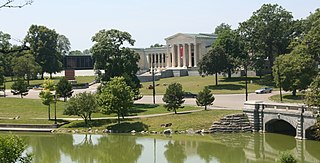
Delaware Park–Front Park System is a historic park system and national historic district in the northern and western sections of Buffalo in Erie County, New York. The park system was designed by Frederick Law Olmsted and Calvert Vaux and developed between 1868 and 1876.
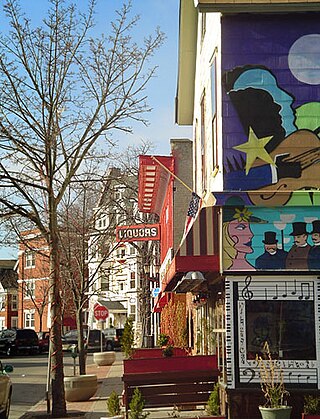
The Allentown district is a neighborhood in Buffalo, New York. The neighborhood is home to the Allentown Historic District.

Atlanta's mild climate and plentiful trees allow for festivals and events to take place in the city year-round. One of the city's most popular events is the Atlanta Dogwood Festival, an arts and crafts festival held in Piedmont Park each spring, when the native dogwoods are in bloom. Atlanta Streets Alive, inspired by the ciclovía in Bogotá, Colombia, closes city streets to car traffic to allow people to participate in health and community-oriented, such as bicycling, strolling, skating, people-watching, tango, yoga, hula hooping, and break dancing.

Saint Patrick's Day, although a legal holiday only in Savannah, Georgia, and Suffolk County, Massachusetts, is nonetheless widely recognized and celebrated throughout the United States. It is primarily celebrated as a recognition of Irish and Irish American culture; celebrations include prominent displays of the color green, eating and drinking, religious observances, and numerous parades. The holiday has been celebrated in what is now the U.S. since 1601.
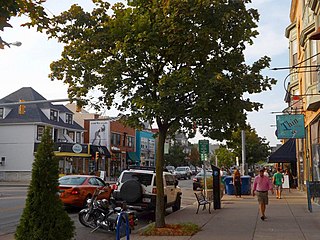
Elmwood Village is a neighborhood in Buffalo, New York.
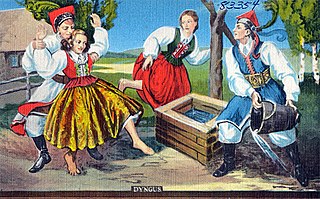
Śmigus-dyngus is a celebration held on Easter Monday across Central Europe, and in small parts of Eastern and Southern Europe. The tradition is widely associated with Poland and is observed by Polish Diaspora communities, particularly among Polish Americans who call it Dyngus Day.

The World Costume Festival is an international fashion festival held every two years in the Philippines city of Vigan City in Ilocos Sur. The event showcases indigenous and modern costumes geared towards live performances, such as drama, festivals, events, as well as multimedia presentations. It emphasizes apparel for special ritual occasions or theater performance work as opposed to regular fashion apparel. Its organizers aim to promote tourism as well as encourage native loom-weaving and fabrics. There is an emphasis on fabric materials and Philippine weaving methods such as batik, abel, and piña, from different parts of the Philippines. A festival was held in Vigan City in the last week of April in 2013. The dominant view is that the 2013 festival in Vigan was the first world costume festival, although there is a report of a similar costume festival that was held in Davao City in the southern Philippine island of Mindanao in 2001. There are reports of the event either becoming an annual event or being held every two years. The event coincides with fashion festivals held in different cities in the Philippines. The event was described as a preview for the World Stage Design Festival in Cardiff, Wales. The primary focus of the event is a costume competition. The highest award at the festival is the Golden Kneeling Carabao Trophy, the carabao is a Philippine water buffalo sometimes found in swamps. In addition to the costume competition, the event has workshops, classes by designers, conferences, as well as lectures from international experts. There is a costume parade down the cobblestone streets of Vigan. The event has "jubilant colors" as well as a body-painting competition. The Manila Standard described the event as "kaleidoscopic" with people wearing costumes from the historic past.

Elmwood Historic District–West is a national historic district located at Buffalo, Erie County, New York. The district encompasses 1,971 contributing buildings, 4 contributing structures, and 13 contributing objects in the Elmwood Village neighborhood of Buffalo. It is built around the Buffalo Parks and Parkways system bounded on the north by Delaware Park, Forest Lawn Cemetery, and the former Buffalo State Asylum, on the south by the Allentown Historic District, and on the east by the Elmwood Historic District–East. This predominantly residential district developed between about 1867 and 1941, and includes notable examples of Queen Anne, Shingle Style, Colonial Revival, Tudor Revival, and American Craftsman style architecture. The district contains one of the most intact collections of built resources from turn of the 20th century in the city of Buffalo and western New York State. Located in the district are six previously listed contributing resources including the Richmond Avenue Methodist-Episcopal Church and the Buffalo Tennis and Squash Club. Other notable building include the H.C. Gerber House (1908), the Fred Dullard House (1910), the William H. Scott House (1904), St. John's-Grace Episcopal Church designed by Bertram Grosvenor Goodhue (1925–26), Davidson House (1885), former Jehle Grocery Store and Residence, St. Luke's Episcopal Church, Temple Beth El, Richmond Avenue Church of Christ (now Bryant Parish Condominiums, and Pilgrim-St. Luke's United Church of Christ.

The Buffalo area economy consists of a mix of industrial, light manufacturing, high technology, and service-oriented private sector companies. Instead of relying on a single industry or sector for its economic future, the region has taken a diversified approach that has the potential to create opportunities for growth and expansion in the 21st century.

















